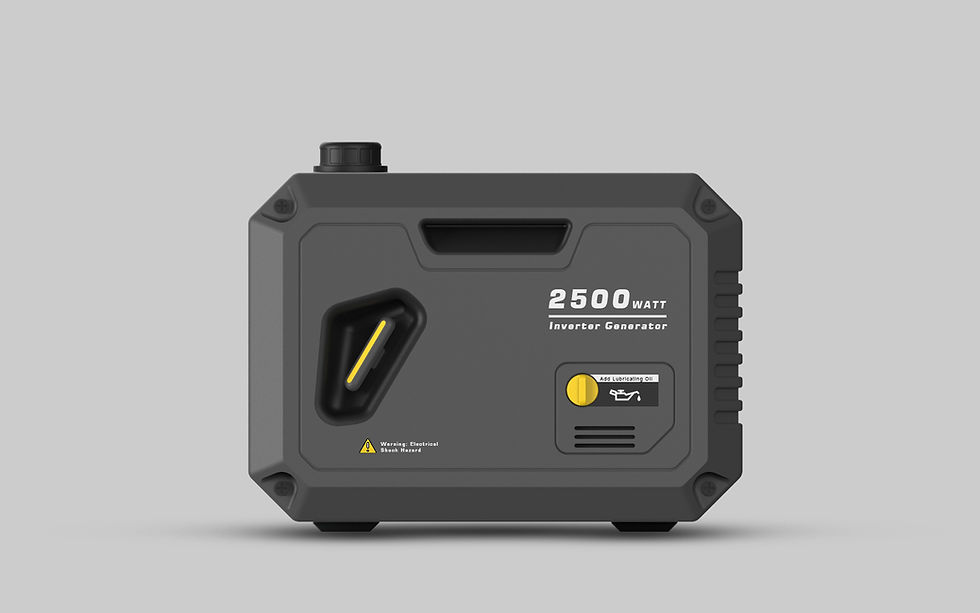Common Manufacturing Processes for Plastic Prototypes
- Outdesign Co.
- Mar 29, 2021
- 3 min read
Updated: Mar 2, 2022
Prototypes are essential for any product development process. Through them, designers can perfect their products by iterative testing and development. One thing though, designers and engineers typically come up with a lot of prototypes before arriving with a fully functional part ready for productization, and sure, this can be daunting. Fortunately for the technology, we have today, manufacturing prototypes has never been more accessible and agile than before.
Rapid prototyping technologies like 3D printing, CNC machining, vacuum casting are slowly taking over the industry of manufacturing plastic prototypes. These rapid prototyping methods all start with your concept and are converted into a workable CAD model subjected to proper simulation for real-world manufacturing constraints.
For your design and modeling needs like CAD modeling and design, Outdesign co. has you covered. We have a high commitment to helping you bring new products to market. Through our range of design, engineering & prototyping services, we make your concept into reality.
When going through the journey of making your products, it is also essential for you to know how your product will be made to be aware of the constraints needed to be considered to ensure your prototype's manufacturability.
Manufacturing a prototype is different from manufacturing a product to scale because of the high tooling cost required for traditional manufacturing like injection molding, plastic thermoforming, and blow molding. Prototyping methods offer minimized tooling costs with the convenience of easily revising your designs, making them perfect for producing low quantity parts. Without further ado, below are the most popular manufacturing methods for producing plastic prototypes:
1. 3D Printing
This process falls under the umbrella of additive manufacturing, wherein it involves joining materials together layer by layer to achieve the desired form. There are different processes involved in 3D printing, and each of them has its own strengths depending on an application. The commonly used methods for producing plastic prototypes are:
Fused Deposition Modeling (FDM)- This is the most common and cheapest among the 3d printing technologies. This process involves extruding molten plastic filament through a nozzle layer by layer until the desired shape is achieved. One concern for this method, however, is the rough surface finish produced.
Stereolithography (SLA)- This is the first method of 3D printing. SLA involves using a high-powered laser to cure a liquid resin layer by layer until the desired form is made. This method boasts an excellent quality on the surface finish and its ability to create intricate and complex shapes. For this, it is widely used for high precision applications like in the medical and microfluidics industry.
Selective Laser Sintering (SLS)- This method involves using a high-powered laser to selectively melt nylon-based powders layer by layer to form a solid plastic. The products made through this method are durable, making them perfect for functional testing applications.
Digital light processing (DLP)- This method is likened to stereolithography, wherein the liquid resin is cured and hardened using light; however, the difference is DLP uses much more advanced technology of flashing the whole image into the entire layer. This makes the process of printing faster.
2. CNC Machining
This prototyping method is one of the oldest and most established methods of fabricating plastic prototypes. CNC machining falls under the umbrella of subtractive manufacturing, wherein it involves removing chunks of materials in a block, using a cutting tool to form the shape of a part. Machining your plastic prototype offers many advantages, and it includes:
The wide availability of plastic types to choose from
Excellent dimensional accuracy
Wide range of surface finishing options
Shorter lead times
Highly functional parts (reliable strength and durability)
Mold is not needed
3. Vacuum Casting
This is also known as urethane casting. The process starts with using a master pattern (either made through 3D printing, clay molds, or machining) to form a mold used in producing the plastic part. Then once the mold is made, a urethane resin is poured into the mold. The whole part (with mold on) is then put into a chamber to draw bubbles out of the mixture. Then finally, the part with the mold is heated to be cured. The benefits of fabricating through this method include fast production, versatility, and cost-effectiveness.















Comments